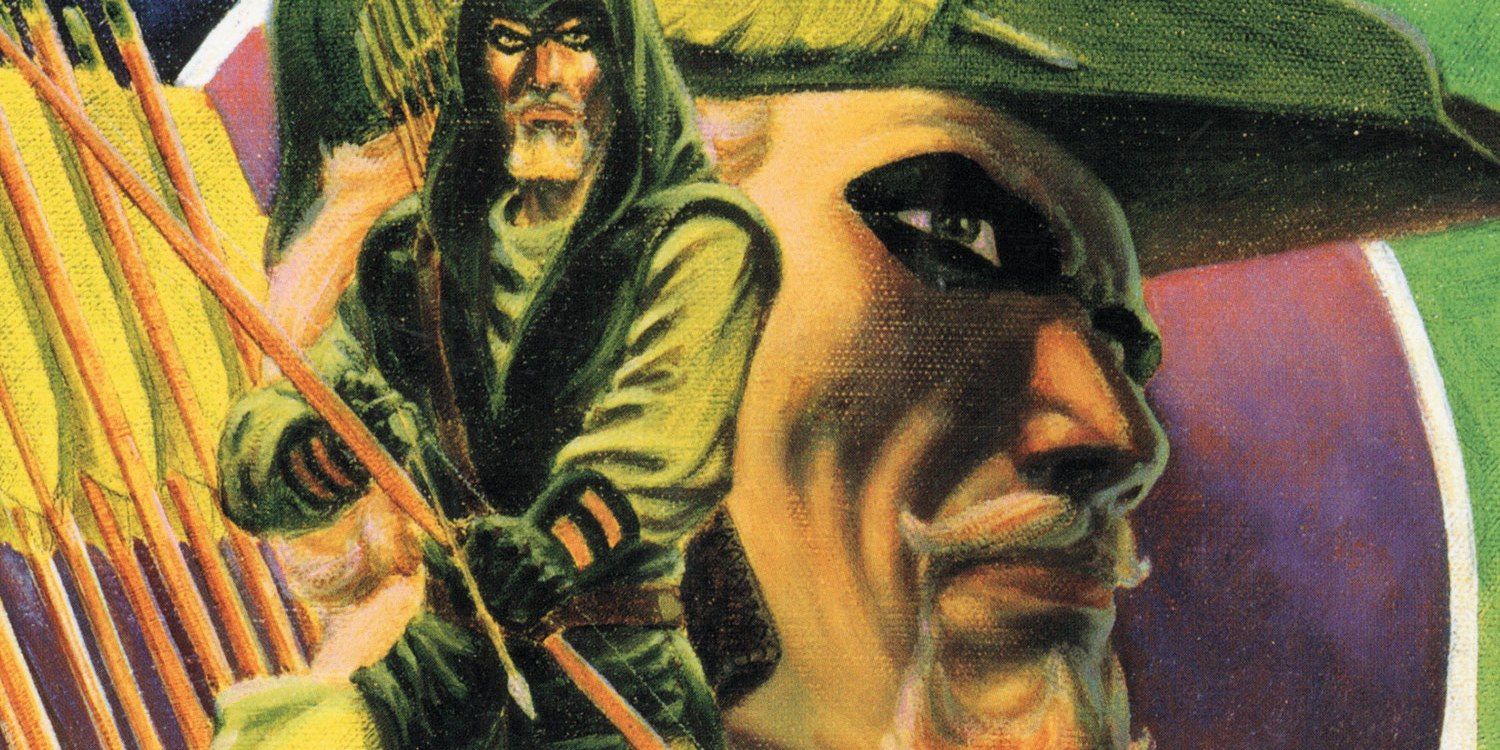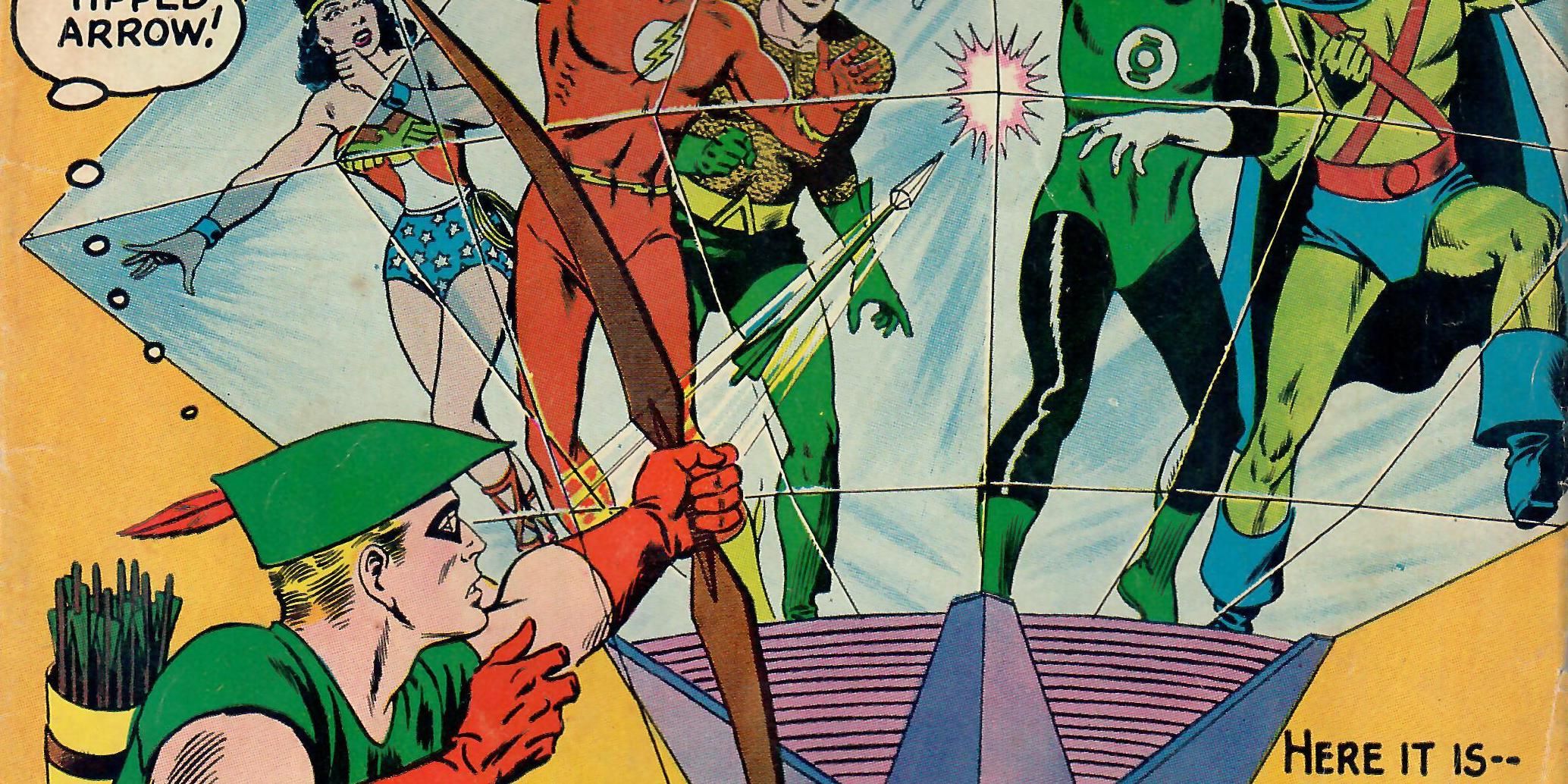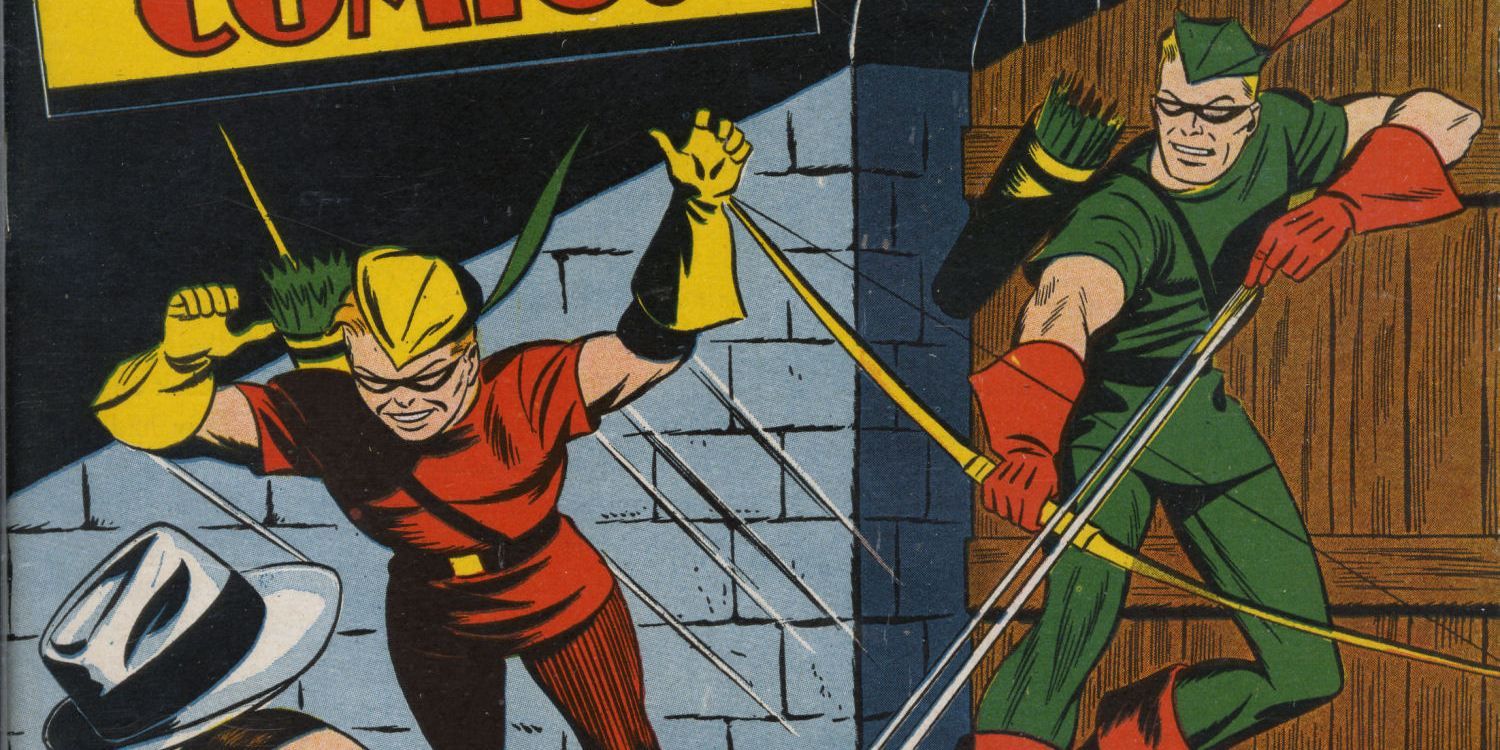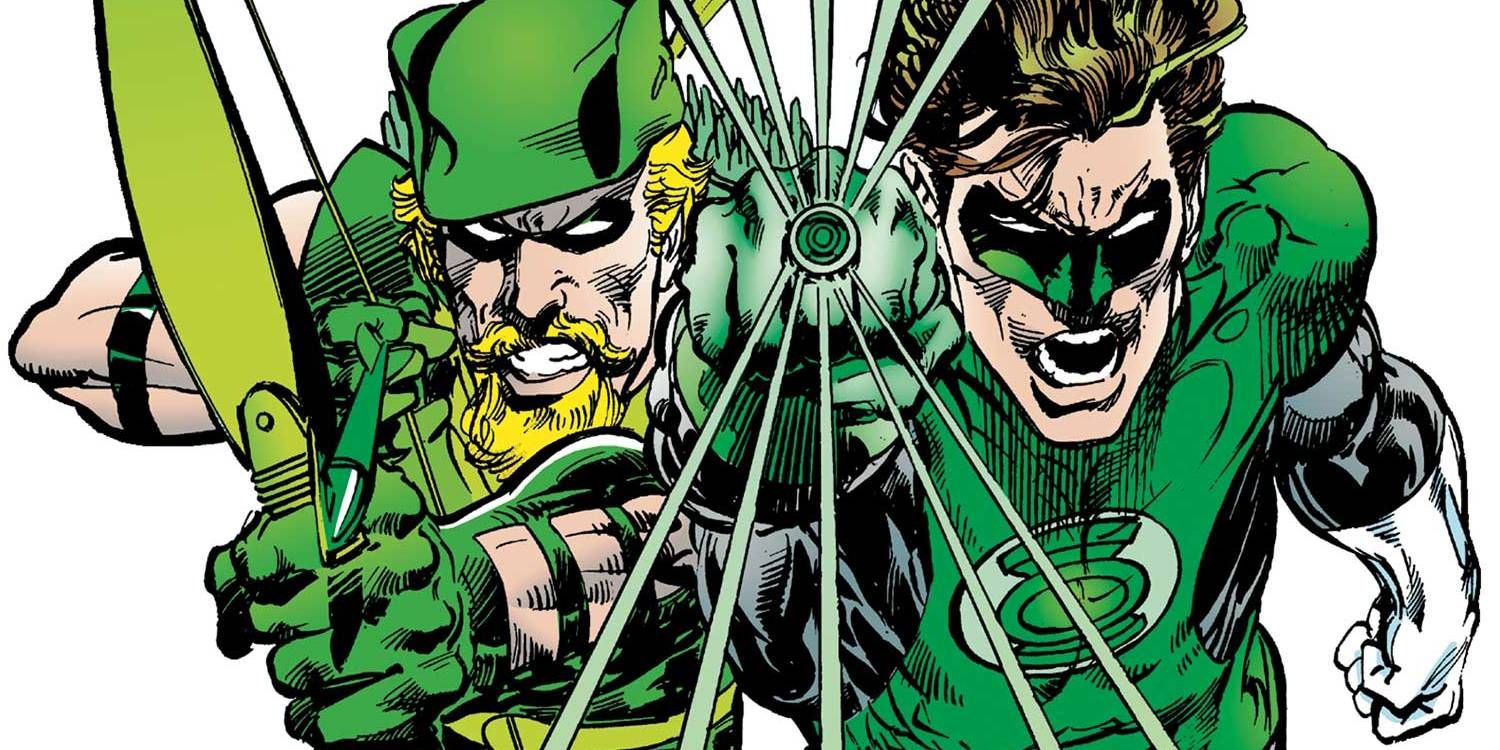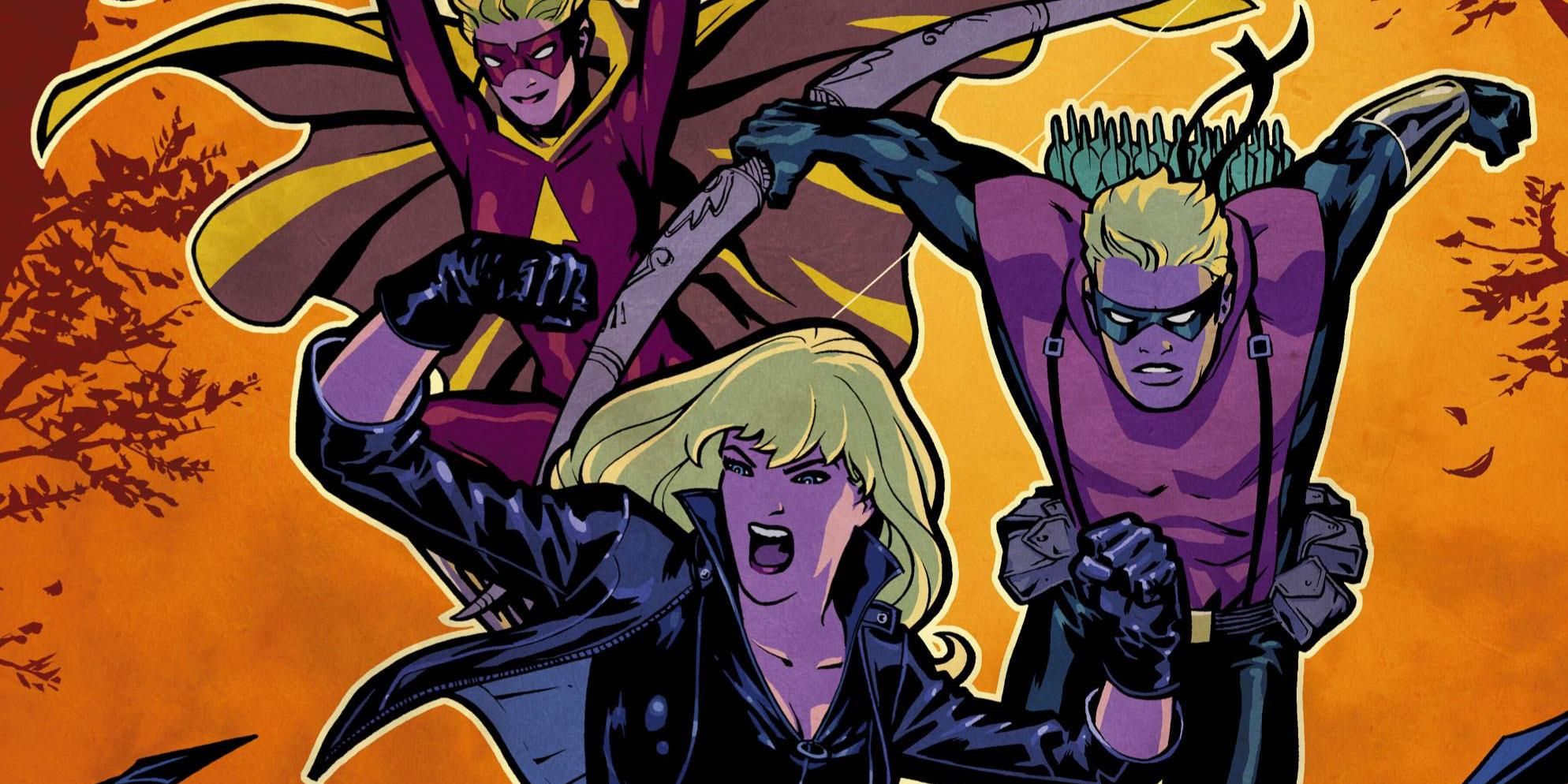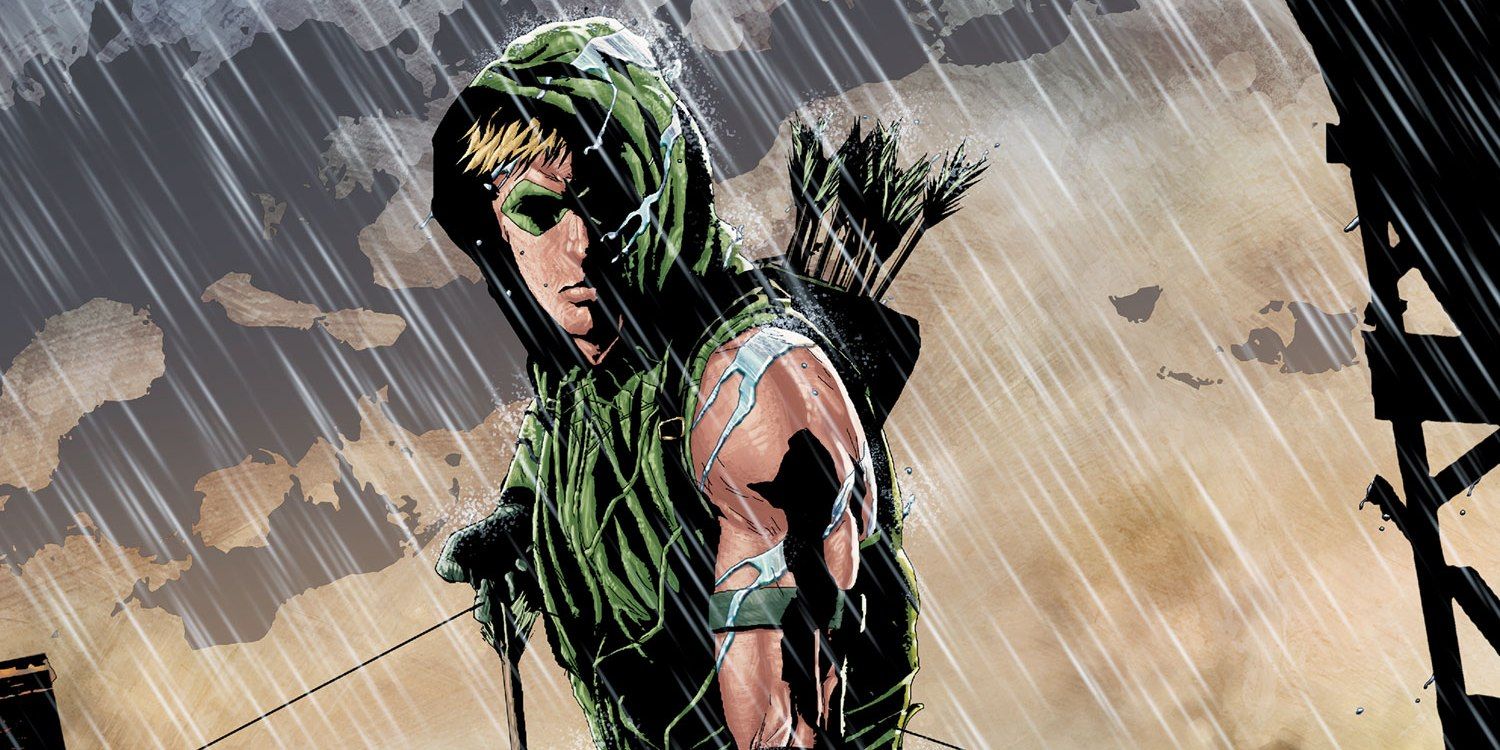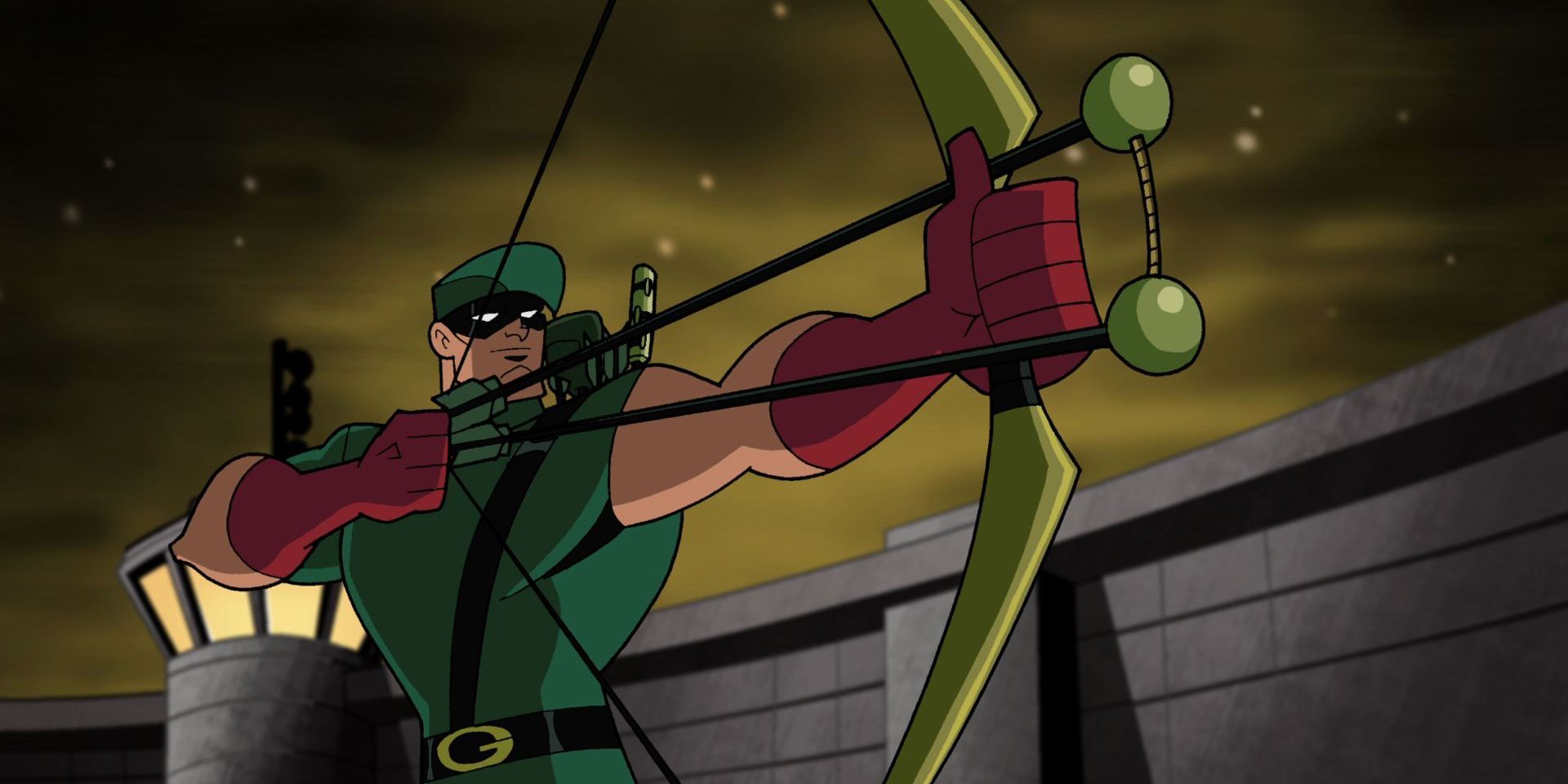Green Arrow was born in the Golden Age of Comics and returned to prominence in the Silver Age, but it wasn't until the 1970s that the character found a compelling voice. More recently he became an unlikely television star -- and eventually the elder statesman of The CW network's shared superhero universe.
Throughout it all he's been written and drawn by some of comics' greatest creators, and endured a few radical reinventions. The most famous one ended (arguably) almost 30 years ago, but it continues to inform the character. In fact, it's only part of a pretty rich history. Since Green Arrow turns 75 this year, today we'll consider how he got so far.
OVERVIEW
Green Arrow's publishing history breaks down into a few big chunks. First is the combined Golden and Silver Age era which started with the character's 1941 introduction and lasted through most of the 1960s. Next is the "activist" era of the 1970s and '80s which began with the character's late-1969 makeover. Finally (as far as big chunks go, that is) there's the "grounded" era which the 1987 "Longbow Hunters" miniseries inaugurated. After that, various Green Arrow creative teams have tried to reinvigorate the character using combinations of earlier approaches.
RELATED: DC Celebrates 75 Years of Green Arrow With New Promo Art
Additionally, in recent years Green Arrow has been adapted twice for television -- first as "Smallville's" answer to Batman, and then as the star of "Arrow" -- and was the subject of the unproduced "Supermax" film. The character also appeared (mostly in a supporting role) in a handful of animated series.
Certainly, "Arrow" has reached a lot more viewers than the current Green Arrow comics. However, as the current Rebirthed approach indicates, the activist Ollie Queen is still a powerful influence on the character, despite its roots in the late 1960s and its differences with the TV version. For that matter, both have come a long way from the original.
EARLY YEARS
Mort Weisinger and George Papp created Green Arrow for "More Fun Comics" issue #73, cover-dated November 1941. Secretly rich playboy Oliver Queen -- who taught himself archery while marooned on a tropical island -- the character was a combination of Robin Hood and Batman. He had a sidekick (Speedy, a/k/a Roy Harper), was headquartered in an Arrowcave, and used trick arrows and various arrow-themed gadgets including an Arrowcar and Arrowplane. In the early days he was even summoned by an Arrowsignal.
(Speaking of which, the Batman villain Signalman once adopted another criminal identity, fighting the Dynamic Duo in 1961's "Batman" #137 as the evil archer called the Blue Bowman. It doesn't look like there's been a Batman/Green Arrow team-up involving this, but the combination is certainly low-hanging fruit.)
Today we don't focus a lot on Green Arrow's Golden Age adventures, but back then he wasn't very hard to find. Besides a 36-issue run in "More Fun" (issues #73-107, November 1941 to January-February 1946), he and Speedy appeared in "Leading Comics" issues #1-14 (Winter 1941-Spring 1945) as two of the Seven Soldiers of Victory. However, Green Arrow rolled into the Silver Age on the strength of long-running features in "World's Finest Comics" and "Adventure Comics." He was in 131 issues of "World's Finest" (issues #7-134, 136, 138, and 140) spanning over 21 years (Fall 1942-March 1964). Likewise, he was in over 100 issues of "Adventure," missing only #206 in a 10-year span from #158 to #269 (November 1950-February 1960). Even if they weren't book-length stories, that's almost 300 issues of comics over a 23-year period, which isn't too shabby by any measure.
Probably this period's most noteworthy set of stories came from 1958's "Adventure" #250-56 and "World's Finest" #96-99, written by Dick and Dave Wood and drawn by Jack Kirby. This was right after Kirby and Dave Wood had created the Challengers of the Unknown, and of course just a few years before Kirby and Stan Lee would create another adventurous quartet for the former Timely Comics. Nevertheless, most Green Arrow stories were written by Ed "France" Herron, one of the regular Batman writers. This probably didn't help the character's reputation as a Batman clone.
THE MAKEOVER
As of the early 1960s Green Arrow was starring only in the "World's Finest Comics" feature, and that would end in 1964. Fortunately, by then the character had joined the Justice League in April-May 1961's "Justice League of America" #4. He would go on to appear in 147 of the original series' first 230 issues (i.e., prior to the Detroit League), even quitting in #181 and rejoining in #200. Good for him, because apart from the occasional guest appearance in books like "Action Comics" and "Teen Titans," "Justice League" was pretty much Green Arrow's only outlet for six years -- from March 1964's "World's Finest" #140 to April 1970's "Green Lantern" #76. While that kept the character visible, it didn't allow for a lot of growth or development.
That all changed in 1969. In August-September 1969's "The Brave and the Bold" #85, artist Neal Adams gave Ollie a distinctive new costume and some instantly-recognizable facial hair. Shortly thereafter, in November 1969's "Justice League of America" #75, writer Denny O'Neil took away his fortune and replaced it with a more progressive perspective. Finally, when O'Neil and Adams revamped the struggling "Green Lantern" with April 1970's issue #76, they brought in the Emerald Archer as a muckraking foil to Hal Jordan's unassuming space-cop. As the two traveled across America, Green Arrow stood up for the impoverished and the forgotten, romanced Black Canary (Dinah Drake Lance, newly arrived from Earth-Two) and struggled to understand why Roy Harper would get hooked on heroin.
Although the O'Neil/Adams team made a splash with "Green Lantern's" burst of social consciousness, that notoriety didn't translate into sales, and the book was cancelled with issue #89 (April-May 1972). "Green Lantern" moved over to an 8-page backup feature in "The Flash," which serialized the final O'Neil/Adams story. O'Neil stayed on to pen Green Lantern's solo adventures, but Green Arrow moved on as well, showing up eventually in 18 issues' worth of an occasional "Action Comics" backup feature (issues #421 to #458, February 1973-April 1976). When "Green Lantern" returned as a regular series in 1976, so did GA; this time drawn by O'Neil's new artistic collaborator Mike Grell. Grell left after issue #100 (succeeded by Alex Saviuk) but the Green Lantern/Green Arrow partnership continued until January 1980's issue #124.
Indeed, the Bronze Age was pretty good for Green Arrow generally. Besides co-starring in "Green Lantern" and appearing regularly in "Justice League," GA once again scored a couple of long-running backup features. First, he returned to "World's Finest" for 38 issues, spanning April-May 1977's #244 through October 1982's #284. Next, he moved to "Detective Comics" for a 44-issue stint, from December 1982's issue #521 through October 1986's #567. Along the way, DC published the first issue of the first solo Green Arrow comic, 1983's 4-issue "Green Arrow" miniseries (written by Mike W. Barr and pencilled by Trevor Von Eeden).
The end of the "Detective" backups capped a run of 16-odd years for the character who'd been made over so famously in 1969-70. After 28 years as a middle-of-the-road crimefighter, Green Arrow certainly wasn't unpopular; but the character was propelled him into the 1970s and '80s by a real kick in the verdant pants. Adams' redesigned costume emphasized Green Arrow's athleticism, while the ubiquitous goatee conveyed a very with-it sensibility (if not sexuality). O'Neil then opened Ollie's eyes -- and, more importantly, his mouth -- to the disillusionments of the 1960s and society's anguished steps into the '70s.
At its core, though, the "Green Arrow" feature still came down to standard superheroic fare. Even if the attitude had changed, the trick arrows hadn't.
THE HUNTER
In a move that must have made the publishing gods chuckle, Green Arrow once again followed Batman's lead. The 1987 miniseries "The Longbow Hunters," written and drawn by Ollie's old artist Mike Grell, was DC's second miniseries in the new graphic-novel-esque Prestige Format. The first, of course, was "The Dark Knight Returns"; and like that watershed Batman story, "Longbow Hunters" retooled Green Arrow and Black Canary for the no-nonsense 1980s. Grell established that each of them were entering middle age (specifically, Ollie was turning 40), thereby allowing each a bit of self-examination. When it was all over they had moved to Seattle, Dinah had been kidnapped and tortured and lost her sonic scream; and Green Arrow had become a darker, more violent figure. The final O'Neil/Adams story (from those 1972 "Flash" backups) saw Ollie so distraught over an accidental killing that he retreated to a monastery; but "Longbow Hunters" blew past that, with Green Arrow using deadly force grimly against an increasingly-sinister class of criminal.
Grell followed "Longbow Hunters" with an 80-issue stint writing the first-ever "Green Arrow" ongoing series (pencilled by, among others, Ed Hannigan and Dan Jurgens). The book introduced longstanding supporting characters Shado and Eddie Fyers, and in many ways foreshadowed the "Arrow" TV show. Ollie abandoned trick arrows for the extra-pointy kind; he stopped wearing a mask in favor of a hooded costume; and he even stopped going by "Green Arrow." For the most part, Grell treated Ollie and crew as if they were disconnected from the rest of the DC Universe. When the book crossed over, it was with similar titles like "The Question" (written by Denny O'Neil), a Bat-book, or the Native American hero called The Butcher. Moreover, when Ollie's old buddy Hal Jordan stopped by, there was no ring-slinging to be had. About the wildest Grell's run ever got was a crossover with his early-'70s creation The Warlord; and that was all but inevitable given the two characters' similar grooming.
Chuck Dixon and Jim Aparo became "Green Arrow's" regular creative team with February 1994's issue #83. In addition to steering the book back towards a more superheroic feel, they also laid the groundwork for Ollie's successor, his son Connor Hawke. Ollie died in a helicopter explosion in October 1995's issue #101 (pencilled by Aparo's successor Rodolfo Damaggio) and would stay dead for the next several years. Connor then teamed up with various Bat-characters and fellow successors Kyle Rayner and Wally West; and joined the Justice League. The series ended in 1998 on a sort of two-part tease. The last regular issue, October 1998's issue #137, hinted strongly that Ollie would return; and the subsequent issue, a "DC One Million" tie-in, confirmed it.
REVIVAL
Regardless, readers still had to wait over two years for the next volume of "Green Arrow." Written by Kevin Smith (fresh off "Daredevil"), pencilled by Phil Hester and inked by Ande Parks, the first issue of the relaunched series was cover-dated April 2001. Ollie's revival was the work of his old friend Hal Jordan, since transformed into the godlike Parallax. In fact, Hal's actions suppressed Ollie's memories of the "Longbow Hunters" era, effectively reinstalling the O'Neil/Adams version of his operating system. Smith, Hester and Parks' run lasted 15 issues and introduced a new Speedy (Mia Dearden) and a new villain, Onomatopoeia. Brad Meltzer followed Smith with the 6-issue "The Archer's Quest," a trip into Golden and Silver Age iconography which guest-starred Roy "Arsenal" Harper and involved a Green Lantern ring.
After that "Green Arrow" settled into a comfortable groove with a decent variety of creative teams. It was cancelled in 2007 after 75 issues, in favor of a new "Green Arrow/Black Canary" series where the longtime lovers would finally get married. In turn, that series lasted 29 issues (December 2007-April 2010) before being relaunched again -- without Black Canary -- as part of 2010's "Brightest Day" event.
Prior to that, though, the 2009-10 miniseries "Justice League: Cry For Justice" toyed with the idea of a splinter League, led by Hal Jordan and Ollie Queen, which would take up the familiar "proactive crimefighting" trope. The miniseries (written by incoming "JLA" writer James Robinson and painted by Mauro Coscioli) was received poorly, in no small part because it ended with a) the death of Roy Harper's adolescent daughter, b) the destruction of a major DC city, and c) Ollie's lethal retribution on Prometheus, the villain involved. Also, the dialogue often felt forced, the art was stiff, and once again Roy Harper was made to suffer. The "Brightest Day" relaunch was therefore designed to give Ollie some closure and/or redemption in the wake of "CFJ." (Roy got his closure, or something meant to approximate it, in the infamous "Rise of Arsenal" miniseries.)
THE NEW 52
If it weren't for DC's 2011 line-wide relaunch, fans might still be trying to chart Ollie's development from generic crimefighter to big-hearted liberal to deadly urban avenger, and back again. Nevertheless, writer J.T. Krul, penciller Dan Jurgens and inker George Pérez rebuilt Ollie from the ground up, restoring his fortune and giving him a television-esque support staff a year before The CW's "Arrow." The New 52's "Green Arrow" was basically an updated version of the Golden Age original, with high-tech equipment and little in the way of progressive bromides (or, for that matter, facial hair).
Perhaps it was too different, because this version didn't last. After a few issues, Keith Giffen had replaced Krul and Ray McCarthy had replaced Pérez, and the creative-team turnover didn't stop there. Ann Nocenti was the regular writer from issues #7-16 (with Judd Winick writing the flashback issue #0), and her artistic collaborators included Harvey Talibao and Freddie Williams II. Ultimately, in issue #17 writer Jeff Lemire and artist Andrea Sorrentino killed off the support staff and sent Ollie on a globetrotting quest, battling weapons-themed clans of martial artists and assembling a team of "Outsiders."
Despite all these weighty storylines, this Green Arrow was still younger than readers had seen in a while (if ever). He joined the New 52's Justice League of America -- emphasis on the "America," to distinguish it from the A-list Justice League -- and later helped form Justice League United. In both instances he was an easygoing teammate, trading quips with the likes of Stargirl, Animal Man and Adam Strange.
However, when "Rebirth" came along this version of Green Arrow grew a goatee and had his consciousness expanded, once again making him more like O'Neil and Adams' world-weary liberal.
THE TAKEAWAYS
Looking back on 75 years' worth of Green Arrow is instructive. For one thing, it puts that 1969-70 makeover in perspective. Denny O'Neil and Neal Adams may have been Green Arrow's two most influential creators, but they only worked on the character together for about a year; and O'Neil's time with Ollie on the revived "Green Lantern" only lasted about another four years. The extended "Adams suit" era spanned about 17 years, from late 1969 to 1987; but that was almost thirty years ago. Although the 2001 revival (and subsequent series) downplayed the grittier "Longbow Hunters" era in favor of the O'Neil/Adams version, the "Arrow" TV series takes its cues more from the Grell- and Dixon-written series (not to mention the Christopher Nolan Batman movies) than it does from O'Neil/Adams.
To be sure, there's a live-action or animated Green Arrow for every era's fans. Besides "Arrow's" grudging acceptance of superheroics, there's "Smallville's" more upbeat interpretation, "Justice League Unlimited's" take on O'Neil/Adams, and the Silver Age excesses of "Batman: The Brave and the Bold." While each is clearly distinct from the other, none seems overly at odds with the character's comics background.
Still, it's easy to forget -- particularly for a DC lifer like me -- that despite the staying power of the O'Neil/Adams makeover, it's not necessarily the be-all and end-all of Green Arrow. Unlike O'Neil and Adams' Batman revitalization (also in late 1969), it didn't go back to the character's Golden Age origins. Instead, it uncoupled Green Arrow from one of the main elements he shared with Batman, and replaced it with a clear authorial voice. Mike Grell did much the same with "The Longbow Hunters," just changing Ollie's perspective to fit Grell's particular approach. If you put the initial "O'Neil/Adams era" of the '70s and '80s together with its revival in 2001-11, the resulting 27-odd years almost equal the character's relatively-bland Golden and Silver Age eras (1941-69). That leaves about 13 years' worth of Grell and Dixon-written stories (1987-2000), plus the past five years of New 52 and Rebirth series (2011-16).
It all adds up to a character with some pretty decent potential, whether as a straight-up superhero, an outspoken crusader, or a gritty urban warrior. While he doesn't have the unbroken publication history of DC's Trinity, over the past 75 years Green Arrow has never really gone away. Instead, he's proved pretty adaptable, even if he sometimes he comes across as a relic from a more rough-hewn time. That's entirely appropriate for a self-taught survivalist, don't you think?

